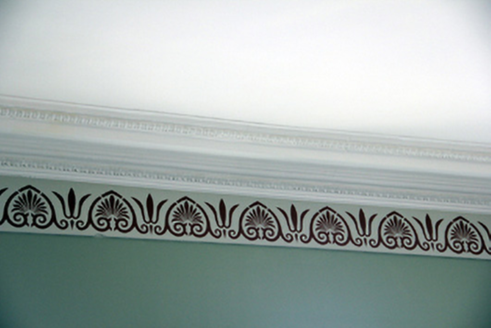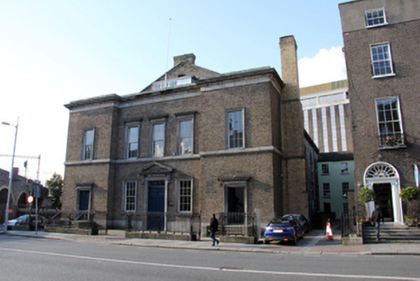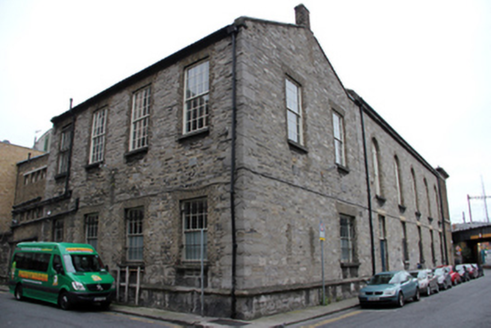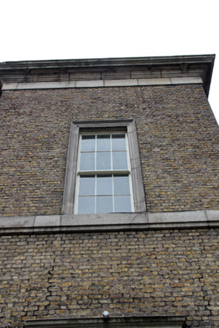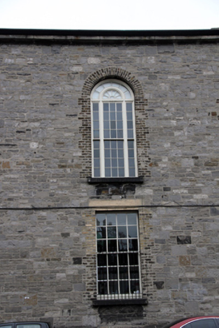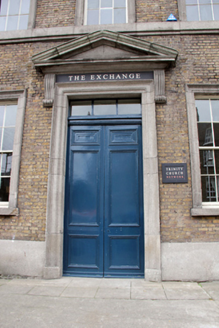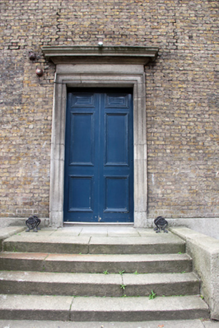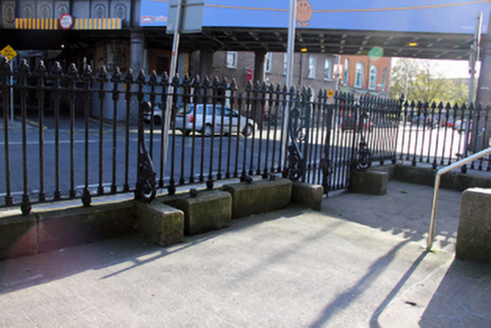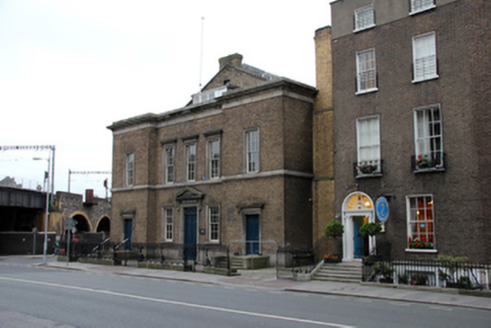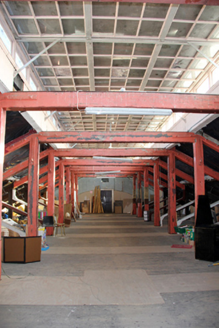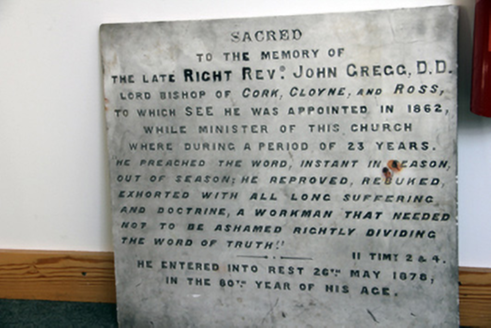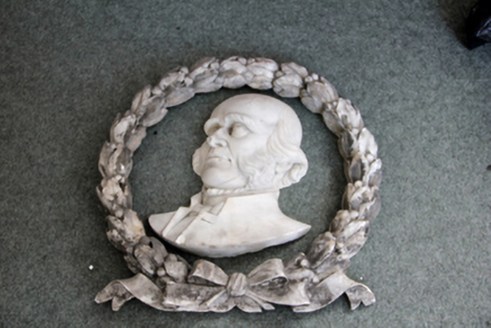Survey Data
Reg No
50010160
Rating
Regional
Categories of Special Interest
Architectural, Artistic, Historical, Social
Previous Name
Labour Exchange
Original Use
Church/chapel
Historical Use
Office
In Use As
Church/chapel
Date
1835 - 1895
Coordinates
316290, 234699
Date Recorded
09/10/2011
Date Updated
--/--/--
Description
Detached five-bay two-storey Protestant Episcopal Church hall over basement, begun 1838 and opened 1839. Yellow brick entrance block to front (east) elevation having advanced end bays. Rubble limestone central block having five-bay two-storey elevation to side (south) running parallel to Beresford Lane. Later five-bay two-storey addition to rear, built c.1890, to accommodate school. Site modified c.1920, including installation of first floor to original galleried space (to interior) and clerestory lighting to church hall for use as labour exchange. Refurbished in 2000s to accommodate its current use as non-denominational church. Pitched artificial slate roof to central block having recent glazed monitor and squared granite coping to gables. Ashlar limestone parapet wall with moulded cornice to entrance block concealing flat roof with central timber flagpole and flat-roofed timber-framed gallery. Pitched artificial slate roof to addition having squared gable copings and dressed stone eaves course. Single rendered chimneystack with profiled top to east of central block, brown brick chimneystack to addition and later engaged nineteenth-century yellow brick chimneystack for boiler to side (north) elevation of entrance block. Mixed cast-iron and replacement uPVC rainwater goods throughout. Flemish bond yellow brick walls to entrance block, having tooled granite sill course to first floor, and granite plinth. Rubble limestone walls to side elevations and rear addition, having tooled limestone eaves course, dressed limestone quoins and chamfered granite plinth course. Square cast-iron vents beneath all first floor sills to side and rear elevations. Square-headed window openings throughout with exception of round-headed window openings to first floors of side elevations. Tooled granite sills and architrave surrounds to front elevation openings, having moulded entablatures to first floor openings of central bays and six-over-six pane timber sliding sash windows throughout. Gauged yellow brick voussoirs, block-and-start surrounds and granite sills elsewhere having replacement timber sliding sash windows to addition window openings. Tripartite multiple-pane timber sliding sash windows with fanlights to first floor openings of side elevations and twelve-over-twelve pane to ground floor. Wrought-iron window guards to ground floor window openings of side and rear elevations. Square-headed door opening to central bay of front elevation within pedimented granite doorcase comprising moulded surround, scrolled console brackets and cornice. Painted lettering reading 'The Exchange' to lintel over double-leaf timber panelled doors, and three-pane timber-framed overlight. Square-headed door openings to advanced bays having moulded granite surrounds surmounted by unadorned entablatures with moulded cornices. Double-leaf timber panelled doors opening onto flagged platforms with twin cast-iron bootscrapers and stepped approaches. Square-headed door opening to side (south) elevation within converted window opening, having gauged yellow brick voussoirs, block-and-start surround and timber panelled door surmounted by timber-framed overlight. Basement to central block only, with exposed basement well to north elevation having raised rendered masonry wall with granite capping and recent railings enclosing area. Recent steel stairs give access to boiler room and basement well which is partially concealed below raised concrete platform with three raised concrete bunker hoods, built in 1940s, to provide access to bomb shelter in basement. Recessed square-headed former window openings now blocked with concrete blocks. Attached two-bay three-storey former accommodation block to western end of side (north) elevation, built contemporaneously with church c.1838. Pitched slate roof with corbelled eaves course and cast-iron rainwater goods. Ruled-and-lined rendered wall to east elevation and buff brick to west. Diminishing square-headed window openings with rendered reveals, granite sills and timber sliding sash windows, three-over-six pane to second floor and six-over-six pane elsewhere. Square-headed door opening with replacement battened timber door and timber-framed overlight. Located set back from street on hard-standing within enclosed grounds. Heavy cast-iron railings with buttressing rails on projecting plinth blocks enclosing site to front. Side (south) and rear elevations front directly onto Beresford Lane with side (north) elevation fronting onto paved laneway. Internally, church had concrete-framed structure inserted in mid-1920s. Much of this structure now removed from first floor to accommodate church hall area during recent refurbishments. It retains two very simple but elegant stair handrails to both access stairs. Much ventilation ironmongery and mechanical operating levers in-situ, possibly later nineteenth-century additions.
Appraisal
This handsome church, designed by the architect Frederick Darley, is situated to the southwest end of Gardiner Street Lower and was originally the Protestant Episcopal Church, later becoming Trinity Church. Rev. John Gregg was a charismatic preacher who attracted the funds and the congregation to support its construction independent of the parish. It retains this relationship today as a trust church of the Church of Ireland. Its galleried hall was probably removed in the 1920s when it was converted for use as a labour exchange and mid-twentieth-century concrete reinforced columns now support the first floor. A school was built to the rear of the church in the mid-nineteenth century with similar detailing and materials. Both buildings retain many of the original ventilation measures including their internal controls and the external vents, a particular preoccupation of Victorian construction. The rendered accommodation block to the side was built contemporaneously with the church and retains original windows to the rear laneway. The proximity to the Trade Union headquarters nearby, and the photos of large unemployment queues outside the building in the 1970s and 1980s, when it operated as a labour exchange, attest to its historical and social significance within this area. The historic setting of the church has been compromised by the Loop Line railway bridge (1888-89) which blocked the view from the Custom House to the extent that it is difficult to view it in context from a southern vantage point. Its recent re-conversion (2000) from a labour exchange has restored the large space on the first floor which had been subdivided and this room retains its original cornice. The large space to the top floor has had recent reinforcement of the original large spanning timber queen-post trusses and reversion to its original single space. The later addition of the passages to the World War II bomb shelter are of historical and social significance, as they are now a rare if not unique example of the urban preparation for the Dublin population during this period. A marble likeness of John Gregg and a laurel wreath that surrounded it are stored for re-erection in the entrance hall, along with a dedication plaque about the Rev. Gregg, which was made by Charles Harrison in 1882. Some of the railings to the street have been temporarily removed but have been stored on site for reuse. This building retains a substantial amount of its original features and fenestration and its recent refurbishment has successfully maintained these characteristics.
